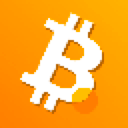Bitget: ติด 4 อันดับแรกตามปริมาณการเทรดรายวันทั่วโลก!
ส่วนแบ่งตลาด BTC62.92%
รายการลิสต์ใหม่บน Bitget : Pi Network
BTC/USDT$85330.32 (+0.44%)ดัชนีความกลัวและความโลภ38(กลัว)
ดัชนี Altcoin Season:0(Bitcoin Season)
เหรียญที่ลิสต์ใน Pre-MarketPAWS,WCTกระแสสุทธิของ Bitcoin Spot ETF ทั้งหมด: -$35.2M (1 วัน); -$808M (7 วัน)แพ็กเกจของขวัญต้อนรับสำหรับผู้ใช้ใหม่มูลค่า 6,200 USDTเคลมเลย
เทรดได้ทุกที่ทุกเวลากับแอป Bitget ดาวน์โหลดเลย
Bitget: ติด 4 อันดับแรกตามปริมาณการเทรดรายวันทั่วโลก!
ส่วนแบ่งตลาด BTC62.92%
รายการลิสต์ใหม่บน Bitget : Pi Network
BTC/USDT$85330.32 (+0.44%)ดัชนีความกลัวและความโลภ38(กลัว)
ดัชนี Altcoin Season:0(Bitcoin Season)
เหรียญที่ลิสต์ใน Pre-MarketPAWS,WCTกระแสสุทธิของ Bitcoin Spot ETF ทั้งหมด: -$35.2M (1 วัน); -$808M (7 วัน)แพ็กเกจของขวัญต้อนรับสำหรับผู้ใช้ใหม่มูลค่า 6,200 USDTเคลมเลย
เทรดได้ทุกที่ทุกเวลากับแอป Bitget ดาวน์โหลดเลย
Bitget: ติด 4 อันดับแรกตามปริมาณการเทรดรายวันทั่วโลก!
ส่วนแบ่งตลาด BTC62.92%
รายการลิสต์ใหม่บน Bitget : Pi Network
BTC/USDT$85330.32 (+0.44%)ดัชนีความกลัวและความโลภ38(กลัว)
ดัชนี Altcoin Season:0(Bitcoin Season)
เหรียญที่ลิสต์ใน Pre-MarketPAWS,WCTกระแสสุทธิของ Bitcoin Spot ETF ทั้งหมด: -$35.2M (1 วัน); -$808M (7 วัน)แพ็กเกจของขวัญต้อนรับสำหรับผู้ใช้ใหม่มูลค่า 6,200 USDTเคลมเลย
เทรดได้ทุกที่ทุกเวลากับแอป Bitget ดาวน์โหลดเลย



ราคา Victoria VRVR
ลิสต์แล้ว
สกุลเงินอ้างอิง:
THB
฿0.1375-4.58%1D
แปลง VR เป็น THB
VR
THB
1 VR = 0.00 THB
Bitget นำเสนอค่าธรรมเนียมธุรกรรมที่ต่ำที่สุดในบรรดาแพลตฟอร์มเทรดหลักทั้งหมด ยิ่งระดับ VIP ของคุณสูงขึ้น อัตราก็จะยิ่งดีขึ้นตามไปด้วย
ราคา
TradingView
มูลค่าตามราคาตลาด
ตารางราคา Victoria VR (VR/THB)
อัปเดตล่าสุดเมื่อ 2025-04-15 04:51:52(UTC+0)
มูลค่าตามราคาตลาด:฿872,691,314.49
Fully Diluted Market Cap:฿872,691,314.49
ปริมาณ (24 ชม.):฿222,102,016.87
ปริมาณ 24 ชม. / มูลค่าตามราคาตลาด:25.45%
สูงสุด 24 ชม.:฿0.1488
ต่ำสุด 24 ชม.:฿0.1353
All Time High:฿23.85
All Time Low:฿0.1030
อุปทานหมุนเวียน:6,346,851,000 VR
อุปทานทั้งหมด:
16,800,000,000VR
อัตราการหมุนเวียน:37.00%
อุปทานสูงสุด:
--VR
ราคาเป็น BTC:0.{7}4810 BTC
ราคาเป็น ETH:0.{5}2509 ETH
ราคาจากมูลค่าตามราคาตลาด BTC:
฿8,941.14
ราคาจากมูลค่าตามราคาตลาด ETH:
฿1,042.18
สัญญา:
0x7d51...e6e8cdd(Ethereum)
เพิ่มเติม
คุณรู้สึกอย่างไรบ้างเกี่ยวกับ Victoria VR ในวันนี้
หมายเหตุ: ข้อมูลนี้ใช้สำหรับอ้างอิงเท่านั้น
รายงานการวิเคราะห์ AI สำหรับ Victoria VR
ไฮไลต์ตลาดคริปโตวันนี้ดูรายงาน
ราคา Victoria VR วันนี้เป็น THB
ราคา Victoria VR แบบเรียลไทม์วันนี้อยู่ที่ ฿0.1375 THB โดยมูลค่าตามราคาตลาดปัจจุบันอยู่ที่ ฿872.69M ราคา Victoria VR ลง 4.58% ในช่วง 24 ที่ผ่านมาและมีปริมาณการเทรด 24 ชั่วโมงอยู่ที่ ฿222.10M อัตราการแปลง VR/THB (Victoria VR เป็น THB) อัปเดตแบบเรียลไทม์
ประวัติราคา Victoria VR (THB)
ราคาของ Victoria VR ปรับตัว -84.12% ในช่วงปีที่ผ่านมา ราคาสูงสุดของ VR เป็น THB ในปีที่แล้วอยู่ที่ ฿0.9625 และราคาต่ำสุดของ VR เป็น THB ในปีที่แล้วอยู่ที่ ฿0.1030
เวลาการเปลี่ยนแปลงราคา (%) ราคาต่ำสุด
ราคาต่ำสุด ราคาสูงสุด
ราคาสูงสุด 
 ราคาต่ำสุด
ราคาต่ำสุด ราคาสูงสุด
ราคาสูงสุด 
24h-4.58%฿0.1353฿0.1488
7d+11.80%฿0.1074฿0.1488
30d-9.94%฿0.1030฿0.1850
90d-61.09%฿0.1030฿0.8574
1y-84.12%฿0.1030฿0.9625
ตลอดกาล+39.20%฿0.1030(2025-04-07, 8 วันที่ผ่านมา )฿23.85(2021-12-02, 3 ปีที่ผ่านมา )
ราคาสูงสุดของ Victoria VR คือเท่าไร
ราคา All Time High (ATH) ของ Victoria VR เป็น THB คือ ฿23.85 บันทึกไว้เมื่อ 2021-12-02 เมื่อเทียบกับ ATH ของ Victoria VR แล้ว ราคาปัจจุบันของ Victoria VR ลงอยู่ 99.42%
ราคาสูงสุดของ Victoria VR คือเท่าไร
ราคา All Time Low (ATL) ของ Victoria VR เป็น THB คือ ฿0.1030 บันทึกไว้เมื่อ 2025-04-07 เมื่อเทียบกับ ATL ของ Victoria VR แล้ว ราคาปัจจุบันของ Victoria VR ขึ้นอยู่ 33.45%
การคาดการณ์ราคา Victoria VR
ราคา VR จะเป็นเท่าใดในปี 2026
จากโมเดลคาดการณ์ผลตอบแทนราคา VR ในอดีต คาดว่าราคา VR จะถึง ฿0.1397 ใน 2026
ราคา VR จะเป็นเท่าใดในปี 2031
ในปี 2031 ราคา VR คาดว่าจะเปลี่ยนแปลง +17.00% โดยภายในสิ้นปี 2031 ราคา VR คาดว่าจะแตะ ฿0.2298 และมี ROI สะสม +66.02%
คำถามที่พบบ่อย
ราคาปัจจุบันของ Victoria VR คือเท่าไร
ราคาแบบเรียลไทม์ของ Victoria VR อยู่ที่ ฿0.14 ตาม (VR/THB) โดยมีมูลค่าตามราคาตลาดปัจจุบันที่ ฿872,691,314.49 THB มูลค่าของ Victoria VR เผชิญกับความผันผวนถี่เนื่องจากตลาดคริปโตมีการเคลื่อนไหวอย่างต่อเนื่องตลอด 24 ชั่วโมงทุกวัน สามารถดูราคาปัจจุบันแบบเรียลไทม์และข้อมูลย้อนหลังของ Victoria VR ได้ที่ Bitget
ปริมาณการเทรด 24 ชั่วโมงของ Victoria VR คือเท่าไร
ในช่วง 24 ชั่วโมงที่ผ่านมา ปริมาณการเทรดของ Victoria VR คือ ฿222.10M
All Time High ของ Victoria VR คือเท่าไร
All Time High ของ Victoria VR คือ ฿23.85 All Time High คือราคาสูงสุดสำหรับ Victoria VR นับตั้งแต่เปิดตัวมา
ฉันสามารถซื้อ Victoria VR บน Bitget ได้หรือไม่
แน่นอน เพราะ Victoria VR พร้อมให้บริการแล้วบนแพลตฟอร์มแลกเปลี่ยนแบบรวมศูนย์ (Centralized Exchange) ของ Bitget สำหรับรายละเอียดการใช้งานเพิ่มเติม โปรดอ่านที่คู่มือ “วิธีซื้อ victoria-vr ” ของเรา
ฉันสามารถรับรายได้คงที่จากการลงทุนใน Victoria VR ได้ไหม
แน่นอน! Bitget ให้บริการ แพลตฟอร์มเทรดเชิงกลยุทธ์ พร้อมบอทเทรดอัจฉริยะเพื่อให้คุณเทรดและทำกำไรได้โดยอัตโนมัติ
ฉันจะซื้อ Victoria VR ด้วยค่าธรรมเนียมต่ำที่สุดได้จากที่ไหน
เรายินดีที่จะประกาศว่า แพลตฟอร์มเทรดเชิงกลยุทธ์ พร้อมให้บริการแล้วบนแพลตฟอร์มแลกเปลี่ยน Bitget Bitget มีค่าธรรมเนียมการเทรดและความลึกของตลาดระดับแนวหน้าในวงการ เพื่อการันตีว่านักเทรดจะได้รับผลกำไรจากการลงทุน
ตลาด Victoria VR
ยอดถือครอง Victoria VR
เมทริกซ์การกระจายยอดถือครอง Victoria VR
ยอดถือครอง Victoria VR ตามการกระจุกตัว
วาฬ
นักลงทุน
รายย่อย
Victoria VR Address ตามระยะเวลาถือครอง
ผู้ถือ
นักท่องเที่ยว
นักเทรด
กราฟราคา coinInfo.name (12) แบบเรียลไทม์

ราคา Victoria VR ทั่วโลก
ตอนนี้ Victoria VR มีมูลค่าเท่าไรในสกุลเงินอื่น อัปเดตล่าสุด: 2025-04-15 04:51:52(UTC+0)
VR เป็น MXN
Mexican Peso
$0.08VR เป็น GTQGuatemalan Quetzal
Q0.03VR เป็น CLPChilean Peso
$3.98VR เป็น UGXUgandan Shilling
Sh15.05VR เป็น HNLHonduran Lempira
L0.11VR เป็น ZARSouth African Rand
R0.08VR เป็น TNDTunisian Dinar
د.ت0.01VR เป็น IQDIraqi Dinar
ع.د5.38VR เป็น TWDNew Taiwan Dollar
NT$0.13VR เป็น RSDSerbian Dinar
дин.0.42VR เป็น DOPDominican Peso
$0.25VR เป็น MYRMalaysian Ringgit
RM0.02VR เป็น GELGeorgian Lari
₾0.01VR เป็น UYUUruguayan Peso
$0.18VR เป็น MADMoroccan Dirham
د.م.0.04VR เป็น OMROmani Rial
ر.ع.0VR เป็น AZNAzerbaijani Manat
₼0.01VR เป็น SEKSwedish Krona
kr0.04VR เป็น KESKenyan Shilling
Sh0.53VR เป็น UAHUkrainian Hryvnia
₴0.17- 1
- 2
- 3
- 4
- 5
วิธีซื้อ Victoria VR(VR)

สร้างบัญชี Bitget ของคุณแบบฟรีๆ
สมัคร Bitget ด้วยที่อยู่อีเมล/หมายเลขโทรศัพท์มือถือของคุณ แล้วสร้างรหัสผ่านที่แข็งแกร่งเพื่อรักษาความปลอดภัยให้บัญชีของคุณ

ยืนยันบัญชีของคุณ
ยืนยันตัวตนของคุณด้วยการป้อนข้อมูลส่วนบุคคลและอัปโหลดเอกสารระบุตัวตนที่ใช้ได้ ซึ่งเป็นเอกสารที่มีรูปภาพประกอบ (Photo ID)

แปลง Victoria VR เป็น VR
เลือกจากคริปโทเคอร์เรนซีต่างๆ เพื่อเทรดบน Bitget
เรียนรู้เพิ่มเติมเข้าร่วม VR Copy Trading โดยการติดตาม Elite Trader
หลังจากทำการสมัครบน Bitget และซื้อ USDT หรือโทเค็น VR สำเร็จแล้ว คุณยังสามารถเริ่ม Copy Trading ได้โดยการติดตาม Elite Trader
รายการลิสต์ใหม่บน Bitget
รายการลิสต์ใหม่
ซื้อเพิ่ม
ซื้อ Victoria VR (VR) ได้ที่ไหน
ส่วนวิดีโอ — ยืนยันฉับไว เทรดได้รวดเร็ว

วิธียืนยันตัวตนบน Bitget ให้เสร็จสิ้นและป้องกันตนเองจากการฉ้อโกง
1. เข้าสู่ระบบไปยังบัญชี Bitget ของคุณ
2. หากคุณเป็นผู้ใช้ใหม่ของ Bitget โปรดดูบทช่วยสอนของเราเรื่องวิธีสร้างบัญชี
3. ชี้เมาส์ไปที่ไอคอนโปรไฟล์ของคุณ จากนั้นคลิกที่ “ไม่ได้รับการยืนยัน / Unverified” แล้วคลิก “ยืนยัน / Verify”
4. เลือกประเทศหรือภูมิภาคที่ออกและประเภทเอกสารระบุตัวตนของคุณ แล้วทำตามขั้นตอนที่ปรากฏ
5. เลือก “การยืนยันทางโทรศัพท์มือถือ / Mobile Verification” หรือ “PC” ตามต้องการ
6. ป้อนรายละเอียดของคุณ ส่งสำเนาเอกสารระบุตัวตน และถ่ายภาพเซลฟี
7. ส่งใบสมัครของคุณ เท่านี้ก็เรียบร้อย คุณเสร็จสิ้นการยืนยันตัวตนแล้ว!
การลงทุนในคริปโทเคอร์เรนซี รวมถึงการซื้อ Victoria VR ออนไลน์ผ่าน Bitget นั้นอยู่ภายใต้ความเสี่ยงในตลาด Bitget พร้อมให้บริการวิธีที่ง่ายดายและสะดวกสำหรับซื้อ Victoria VR และเราจะพยายามอย่างสุดความสามารถเพื่อให้ข้อมูลผู้ใช้เกี่ยวกับคริปโทเคอร์เรนซีแต่ละรายการที่เรามีให้บริการบนแพลตฟอร์ม อย่างไรก็ตาม Bitget จะมิได้มีส่วนรับผิดชอบต่อผลลัพธ์ที่อาจเกิดขึ้นจากการซื้อ Victoria VR ของคุณ หน้านี้และข้อมูลที่อยู่ในหน้านี้ไม่ใช่การสนับสนุนคริปโทเคอร์เรนซีรายการใดรายการหนึ่งแต่อย่างใด
แปลง VR เป็น THB
VR
THB
1 VR = 0.1375 THB
Bitget นำเสนอค่าธรรมเนียมธุรกรรมที่ต่ำที่สุดในบรรดาแพลตฟอร์มเทรดหลักทั้งหมด ยิ่งระดับ VIP ของคุณสูงขึ้น อัตราก็จะยิ่งดีขึ้นตามไปด้วย
เรตติ้ง Victoria VR
เรตติ้งโดยเฉลี่ยจากชุมชน
4.4
คอนเทนต์นี้มีจุดประสงค์เพื่อให้ข้อมูลเท่านั้น
Bitget Insights

AshuBajwaB60
2025/04/03 08:44
# __Navigating the Future of E-commerce: Trends, Strategies, and Innovations__
The e-commerce landscape is rapidly evolving, driven by advances in technology, shifting consumer behaviors, and innovative business models. As we look to the future, it's essential to understand the trends, strategies, and innovations that will shape the industry. In this article, we'll explore the future of e-commerce, highlighting key developments and providing insights for businesses seeking to thrive in this dynamic environment.
# Trends Shaping the Future of E-commerce
Several trends are transforming the e-commerce landscape:
1. *Personalization and AI-Powered Recommendations*: AI-driven personalization and recommendation engines are enhancing customer experiences, increasing engagement, and driving conversions.
2. *Omnichannel Retailing*: Seamless integration across online and offline channels is becoming essential, enabling customers to interact with brands whenever, wherever, and however they choose.
3. *Sustainable and Socially Responsible E-commerce*: Consumers are increasingly expecting brands to prioritize sustainability, social responsibility, and environmental stewardship.
4. *Augmented Reality (AR) and Virtual Reality (VR) Experiences*: Immersive AR and VR experiences are revolutionizing product demonstrations, try-ons, and customer engagement.
# Strategies for E-commerce Success
To succeed in the rapidly evolving e-commerce landscape, businesses should:
1. *Prioritize Customer Experience*: Focus on delivering seamless, personalized, and engaging customer experiences across all touchpoints.
2. *Invest in Data Analytics and AI*: Leverage data analytics and AI to gain insights into customer behavior, preferences, and needs, informing product development, marketing strategies, and operational optimization.
3. *Develop a Strong Brand Identity*: Establish a unique brand voice, visual identity, and tone, ensuring consistency across all channels and customer interactions.
4. *Foster a Culture of Innovation*: Encourage experimentation, learning, and innovation within your organization, staying ahead of the curve in terms of technology, trends, and consumer expectations.
# Innovations Transforming E-commerce
Several innovations are transforming the e-commerce landscape:
1. *Blockchain and Cryptocurrency Payments*: Blockchain technology and cryptocurrency payments are enhancing security, transparency, and efficiency in e-commerce transactions.
2. *Voice Commerce and Conversational AI*: Voice-activated assistants and conversational AI are revolutionizing the way customers interact with brands, making shopping more convenient, accessible, and personalized.
3. *3D Printing and Customization*: 3D printing and customization technologies are enabling businesses to offer personalized, made-to-order products, reducing waste and inventory costs.
4. *Social Commerce and Influencer Marketing*: Social commerce platforms and influencer marketing are becoming increasingly important, enabling businesses to reach and engage with customers in new and innovative ways.
# Conclusion
The future of e-commerce is exciting, with trends, strategies, and innovations converging to create new opportunities for businesses to thrive. By prioritizing customer experience, investing in data analytics and AI, developing a strong brand identity, and fostering a culture of innovation, businesses can stay ahead of the curve and succeed in the rapidly evolving e-commerce landscape.
# Recommendations
1. *Stay Up-to-Date with Industry Trends*: Continuously monitor and analyze industry trends, innovations, and consumer behaviors to inform business strategies.
2. *Invest in Emerging Technologies*: Explore and invest in emerging technologies, such as AR, VR, blockchain, and voice commerce, to stay ahead of the competition.
3. *Prioritize Customer Experience*: Focus on delivering seamless, personalized, and engaging customer experiences across all touchpoints, driving loyalty, retention, and advocacy.
4. *Develop a Strong Brand Identity*: Establish a unique brand voice, visual identity, and tone, ensuring consistency across all channels and customer interactions.
5. *Foster a Culture of Innovation*: Encourage experimentation, learning, and innovation within your organization, driving growth, competitiveness, and success in the e-commerce landscape.
AR-2.48%
VIRTUAL-0.45%

AshuBajwaB60
2025/04/01 11:00
# __The Impact of Virtual Reality on Architecture and Real Estate__
Virtual reality (VR) is transforming the architecture and real estate industries, providing a new and innovative way to design, build, and sell properties. By utilizing VR technology, architects, designers, and real estate agents can create immersive and interactive experiences, enabling clients to fully visualize and explore spaces before they are built. In this article, we'll explore the impact of VR on architecture and real estate, highlighting the benefits, challenges, and future directions of this emerging technology.
# Benefits of Virtual Reality in Architecture and Real Estate
The benefits of VR in architecture and real estate are numerous, including:
1. *Improved Visualization*: VR enables clients to fully visualize and explore spaces, reducing the risk of miscommunication and improving design accuracy.
2. *Enhanced Collaboration*: VR facilitates collaboration between architects, designers, and clients, enabling real-time feedback and design iteration.
3. *Increased Efficiency*: VR streamlines the design and construction process, reducing the need for physical prototypes and minimizing errors.
4. *Cost Savings*: VR can reduce costs associated with physical prototypes, travel, and site visits.
# Challenges Facing Virtual Reality Adoption in Architecture and Real Estate
Despite the benefits of VR in architecture and real estate, there are several challenges facing adoption, including:
1. *High Upfront Costs*: The cost of VR equipment and software can be prohibitively expensive for small firms and individuals.
2. *Limited Content Creation*: Creating high-quality VR content requires specialized skills and expertise, limiting the availability of VR experiences.
3. *User Experience*: VR experiences can be disorienting and uncomfortable for some users, particularly those with motion sickness or other sensitivities.
4. *Integration with Existing Workflows*: VR technology must be integrated with existing workflows and software, requiring significant investment in training and implementation.
# Future Directions for Virtual Reality in Architecture and Real Estate
The future of VR in architecture and real estate holds much promise, with potential developments in:
1. *Cloud-Based VR Platforms*: Cloud-based VR platforms can enable seamless collaboration and content sharing, reducing the need for expensive hardware and software.
2. *Artificial Intelligence and Machine Learning*: AI and ML can enhance VR experiences, enabling real-time design iteration and optimization.
3. *Mixed Reality and Augmented Reality*: Mixed reality (MR) and augmented reality (AR) can further blur the lines between physical and digital environments, enabling new and innovative applications in architecture and real estate.
4. *Virtual Property Tours*: Virtual property tours can become increasingly common, enabling clients to explore properties remotely and reducing the need for physical site visits.
# Conclusion
Virtual reality is transforming the architecture and real estate industries, providing a new and innovative way to design, build, and sell properties. While challenges remain, the benefits of VR are clear, and the industry is expected to continue to grow and evolve in the coming years.
# Recommendations
1. *Invest in VR Equipment and Software*: Invest in VR equipment and software to enable the creation of high-quality VR experiences.
2. *Develop VR Content Creation Skills*: Develop VR content creation skills to enable the creation of high-quality VR experiences.
3. *Integrate VR with Existing Workflows*: Integrate VR technology with existing workflows and software to enable seamless collaboration and content sharing.
4. *Promote VR Adoption*: Promote VR adoption among architects, designers, and real estate agents to enable the widespread adoption of this emerging technology.
5. *Support Research and Development*: Support research and development in VR technology, focusing on cloud-based platforms, AI, and MR/AR applications.
AR-2.48%
CLOUD-0.28%
KingOT
2025/04/01 08:46
Navigating the Shifting Sands: Understanding $IMT Market Demand
The $IMT (International Mobile Telecommunications) market is a dynamic and ever-evolving landscape, driven by relentless technological advancements and the insatiable global appetite for connectivity. Understanding the intricate forces shaping $IMT demand is crucial for stakeholders across the telecommunications ecosystem, from network operators and equipment manufacturers to application developers and consumers.
The Driving Forces:
Several key factors are fueling the continued growth and transformation of $IMT market demand:
* Explosive Data Consumption: The proliferation of bandwidth-intensive applications like video streaming, online gaming, and augmented/virtual reality (AR/VR) is driving an exponential increase in data consumption. This necessitates robust $IMT networks capable of handling the surging traffic.
* The 5G Revolution and Beyond: The rollout of 5G networks, with its promise of ultra-low latency, high bandwidth, and massive connectivity, is fundamentally reshaping the $IMT landscape. As 5G matures and 6G research accelerates, the demand for advanced $IMT technologies will only intensify.
* Internet of Things (IoT) Expansion: The rapid expansion of IoT devices and applications, spanning smart homes, industrial automation, and connected vehicles, is creating a massive demand for reliable and ubiquitous $IMT connectivity.
* Emerging Markets Growth: Developing economies are experiencing rapid growth in mobile penetration and data usage, creating significant opportunities for $IMT market expansion. These markets often represent the most significant areas of future growth in $IMT.
* Digital Transformation: Businesses across all sectors are undergoing digital transformations, relying on $IMT networks to support remote work, cloud computing, and other digital services. This trend is further amplified by global events that accelerate the adoption of digital tools.
* Mobile Video Consumption: The increase in mobile video consumption, especially short form content, is a significant driver of data demand. This trend causes $IMT networks to be under more strain than ever before.
Challenges and Considerations:
While the $IMT market holds immense potential, it also faces several challenges:
* Spectrum Availability: Securing sufficient spectrum is critical for deploying and expanding $IMT networks. The increasing demand for spectrum is driving up auction prices and creating competition among operators.
* Infrastructure Investment: Building and maintaining robust $IMT infrastructure, particularly 5G and beyond, requires significant capital investment.
* Affordability and Accessibility: Ensuring affordable access to $IMT services for all segments of the population is essential for bridging the digital divide.
* Security and Privacy: As $IMT networks become more pervasive, ensuring the security and privacy of user data is paramount.
* Sustainability: The environmental impact of $IMT networks, including energy consumption and electronic waste, is a growing concern.
The Future of $IMT:
The future of the $IMT market is bright, driven by relentless innovation and the increasing reliance on mobile connectivity. As technologies like 5G, 6G, and artificial intelligence converge, $IMT networks will play an even more critical role in shaping the digital economy. Stakeholders must remain agile and adaptable to navigate the shifting sands of $IMT market demand and capitalize on the opportunities that lie ahead. The $IMT market will continue to grow and transform the way people live and work.
AR-2.48%
VIRTUAL-0.45%

AshuBajwaB60
2025/03/31 08:30
# __The Impact of Virtual Reality on Education: Enhancing the Learning Experience__
Virtual reality (VR) is transforming the education sector, offering an immersive and interactive learning experience that enhances student engagement, retention, and understanding. In this article, we'll explore the impact of VR on education, highlighting its benefits, applications, challenges, and future directions.
# Benefits of Virtual Reality in Education
VR offers numerous benefits in education, including:
1. *Enhanced Engagement*: VR experiences are interactive and immersive, increasing student engagement and motivation.
2. *Improved Retention*: VR helps students retain information better, as they are more likely to remember experiences than traditional teaching methods.
3. *Increased Understanding*: VR enables students to visualize complex concepts, improving their understanding and comprehension.
4. *Personalized Learning*: VR can be tailored to individual learning styles, abilities, and needs, providing a personalized learning experience.
# Applications of Virtual Reality in Education
VR has various applications in education, including:
1. *Science, Technology, Engineering, and Mathematics (STEM)*: VR can enhance STEM education by providing interactive, 3D models and simulations.
2. *Language Learning*: VR can immerse language learners in virtual environments, enhancing their listening, speaking, reading, and writing skills.
3. *History and Cultural Studies*: VR can transport students to historical events, cultural sites, and museums, providing a unique perspective on the past.
4. *Medical and Healthcare Education*: VR can simulate real-world medical scenarios, allowing students to practice and develop their clinical skills.
# Challenges Facing Virtual Reality in Education
While VR offers numerous benefits in education, there are also challenges to overcome, including:
1. *Cost and Accessibility*: VR equipment and software can be expensive, limiting accessibility for some schools and students.
2. *Technical Issues*: VR experiences can be affected by technical issues, such as lag, glitches, and hardware malfunctions.
3. *Content Creation*: Creating high-quality, educational VR content can be time-consuming and require significant resources.
4. *Teacher Training*: Teachers may require training to effectively integrate VR into their teaching practices.
# Future Directions for Virtual Reality in Education
The future of VR in education holds much promise, with potential developments in:
1. *Advancements in Hardware and Software*: Improvements in VR hardware and software will enhance the overall VR experience, making it more accessible and affordable.
2. *Increased Content Availability*: The development of more educational VR content will provide teachers with a wider range of resources to support their teaching practices.
3. *Integration with Other Technologies*: VR will be integrated with other technologies, such as artificial intelligence, augmented reality, and the Internet of Things, to create more immersive and interactive learning experiences.
4. *Personalized and Adaptive Learning*: VR will be used to create personalized and adaptive learning experiences, tailored to individual students' needs, abilities, and learning styles.
# Conclusion
Virtual reality is transforming the education sector, offering an immersive and interactive learning experience that enhances student engagement, retention, and understanding. While there are challenges to overcome, the benefits of VR in education make it an exciting and promising field of study.
# Recommendations
1. *Invest in Virtual Reality Infrastructure*: Invest in VR equipment and software to support the integration of VR into educational institutions.
2. *Develop High-Quality Educational Content*: Develop high-quality, educational VR content that aligns with curriculum standards and supports teaching practices.
3. *Provide Teacher Training and Support*: Provide teachers with training and support to effectively integrate VR into their teaching practices.
4. *Conduct Research and Evaluation*: Conduct research and evaluation to assess the effectiveness of VR in education and identify areas for improvement.
5. *Foster Collaboration and Knowledge Sharing*: Foster collaboration and knowledge sharing among educators, researchers, and industry experts to advance the use of VR in education.
VIRTUAL-0.45%
VR+0.24%

AshuBajwaB60
2025/03/27 17:30
# __Revolutionizing Education: The Future of Virtual and Augmented Reality in the Classroom__
The education sector is on the cusp of a revolution, driven by the increasing adoption of virtual and augmented reality (VR/AR) technologies. VR/AR is transforming the way we learn, making education more immersive, interactive, and effective. In this article, we'll explore the future of VR/AR in education, highlighting its benefits, challenges, and potential applications.
# Benefits of Virtual and Augmented Reality in Education
VR/AR offers several benefits, including:
1. *Improved Engagement*: VR/AR increases student engagement, motivation, and participation, leading to better learning outcomes.
2. *Enhanced Retention*: VR/AR improves knowledge retention, as students are more likely to remember experiences that are interactive and immersive.
3. *Personalized Learning*: VR/AR enables personalized learning, tailoring educational content to individual students' needs, abilities, and learning styles.
4. *Increased Accessibility*: VR/AR increases accessibility, enabling students with disabilities or limitations to participate in educational experiences that may be difficult or impossible for them to access otherwise.
5. *Cost-Effective*: VR/AR is cost-effective, reducing the need for physical equipment, travel, and other resources.
# Challenges of Virtual and Augmented Reality in Education
VR/AR also faces several challenges, including:
1. *Technical Issues*: VR/AR requires reliable technology, including high-performance computers, specialized hardware, and stable internet connections.
2. *Content Creation*: VR/AR requires high-quality, educational content, which can be time-consuming and expensive to create.
3. *Teacher Training*: VR/AR requires teacher training, enabling educators to effectively integrate VR/AR into their curriculum and teaching practices.
4. *Equity and Access*: VR/AR raises concerns about equity and access, as not all students have equal access to VR/AR technology and resources.
5. *Assessment and Evaluation*: VR/AR requires new approaches to assessment and evaluation, measuring student learning in immersive environments.
# Applications of Virtual and Augmented Reality in Education
VR/AR is being applied in various ways, including:
1. *K-12 Education*: VR/AR is being used in K-12 education, enhancing student engagement, motivation, and participation in subjects such as math, science, and language arts.
2. *Higher Education*: VR/AR is being used in higher education, enabling students to explore complex concepts, simulate real-world scenarios, and develop practical skills.
3. *Vocational Training*: VR/AR is being used in vocational training, providing students with hands-on experience and training in fields such as healthcare, manufacturing, and construction.
4. *Special Education*: VR/AR is being used in special education, providing students with disabilities or limitations with personalized learning experiences and accommodations.
5. *Corporate Training*: VR/AR is being used in corporate training, enabling employees to develop new skills, practice complex scenarios, and improve their performance.
# Conclusion
The future of education is virtual and augmented reality, offering a more immersive, interactive, and effective way of learning. While VR/AR faces several challenges, including technical issues, content creation, and teacher training, the benefits of VR/AR, including improved engagement, enhanced retention, and personalized learning, make it an attractive option for many educational institutions and organizations.
# Recommendations
1. *Invest in Virtual and Augmented Reality Infrastructure*: Invest in VR/AR infrastructure, including high-performance computers, specialized hardware, and stable internet connections.
2. *Develop High-Quality Educational Content*: Develop high-quality, educational VR/AR content, tailored to specific subjects, age groups, and learning objectives.
3. *Provide Teacher Training and Support*: Provide teacher training and support, enabling educators to effectively integrate VR/AR into their curriculum and teaching practices.
4. *Address Equity and Access Concerns*: Address equity and access concerns, ensuring that all students have equal access to VR/AR technology and resources.
5. *Develop New Approaches to Assessment and Evaluation*: Develop new approaches to assessment and evaluation, measuring student learning in immersive environments.
AR-2.48%
VIRTUAL-0.45%
สินทรัพย์ที่เกี่ยวข้อง
คริปโทเคอร์เรนซียอดนิยม
รายการคริปโทเคอร์เรนซีที่มีมูลค่าตามราคาตลาดสูงที่สุด 8 อันดับแรก
เพิ่มเมื่อเร็วๆ นี้
คริปโทเคอร์เรนซีที่เพิ่มเข้ามาล่าสุด
มูลค่าตามราคาตลาดที่เปรียบเทียบกันได้
ในบรรดาสินทรัพย์ Bitget ทั้งหมด 8 สินทรัพย์เหล่านี้มีมูลค่าตามราคาตลาดใกล้เคียงกับ Victoria VR ที่สุด
ข้อมูลเพิ่มเติมเกี่ยวกับ Victoria VR
ภาพรวมเหรียญ
ที่เกี่ยวข้องกับเหรียญ
ที่เกี่ยวข้องกับการเทรด
ข้อมูลอัปเดตเกี่ยวกับเหรียญ
เทรด
Earn
VR พร้อมให้เทรดบน แพลตฟอร์มแลกเปลี่ยน Bitget และสามารถนำไปเก็บในบริการดูแลรักษาสินทรัพย์บน Bitget Wallet ได้ ทั้งนี้ แพลตฟอร์มแลกเปลี่ยน Bitget ยังเป็นหนึ่งในแพลตฟอร์มแลกเปลี่ยนแบบรวมศูนย์ (Centralized Exchange) รายแรกๆ ที่รองรับการเทรด VR อีกด้วย
คุณสามารถเทรด VR บน Bitget ได้VR/USDT
Spot

































Social Data ของ Victoria VR
ในช่วง 24 ชั่วโมงที่ผ่านมา คะแนนความเชื่อมั่นบนโซเชียลมีเดียสำหรับ Victoria VR อยู่ที่ 3 และความเชื่อมั่นบนโซเชียลมีเดียต่อเทรนด์ราคาของ Victoria VR มีลักษณะ Bullish ทั้งนี้ คะแนนโซเชียลมีเดียโดยรวมของ Victoria VR อยู่ที่ 0 ซึ่งถูกจัดอยู่ในอันดับที่ 602 จากบรรดาคริปโทเคอร์เรนซีทั้งหมด
จากข้อมูลของ LunarCrush ในช่วง 24 ชั่วโมงที่ผ่านมา มีการกล่าวถึงคริปโทเคอร์เรนซีบนโซเชียลมีเดียทั้งหมด ครั้ง โดย Victoria VR ได้รับการกล่าวถึงด้วยอัตราความถี่ 0% ซึ่งถูกจัดอยู่ในอันดับที่ 454 จากบรรดาคริปโทเคอร์เรนซีทั้งหมด
ในช่วง 24 ชั่วโมงที่ผ่านมา มีผู้ใช้ที่ไม่ซ้ำกันทั้งหมด 42 รายที่พูดคุยเกี่ยวกับ Victoria VR โดยมีการกล่าวถึง Victoria VR ทั้งหมด 22 ครั้ง อย่างไรก็ตาม เมื่อเปรียบเทียบกับช่วง 24 ชั่วโมงก่อนหน้านี้ พบว่าจำนวนผู้ใช้ที่ไม่ซ้ำกัน ลดลง ถึง 19% และจำนวนการกล่าวถึงทั้งหมด เพิ่มขึ้น ถึง 29%
บน Twitter มี Tweet ที่กล่าวถึง Victoria VR ทั้งหมด 0 รายการในช่วง 24 ชั่วโมงที่ผ่านมา โดยใน Tweet ดังกล่าว มี 0% กำลัง Bullish กับ Victoria VR, 0% กำลัง Bearish กับ Victoria VR และ 100% อยู่ในสภาวะเป็นกลางกับ Victoria VR
ใน Reddit มี 1 โพสต์ที่กล่าวถึง Victoria VR ใน 24 ชั่วโมงที่ผ่านมา เมื่อเทียบกับช่วง 24 ชั่วโมงก่อนหน้า จำนวนการกล่าวถึงลดลงถึง 0%
ภาพรวมโซเชียลทั้งหมด
3